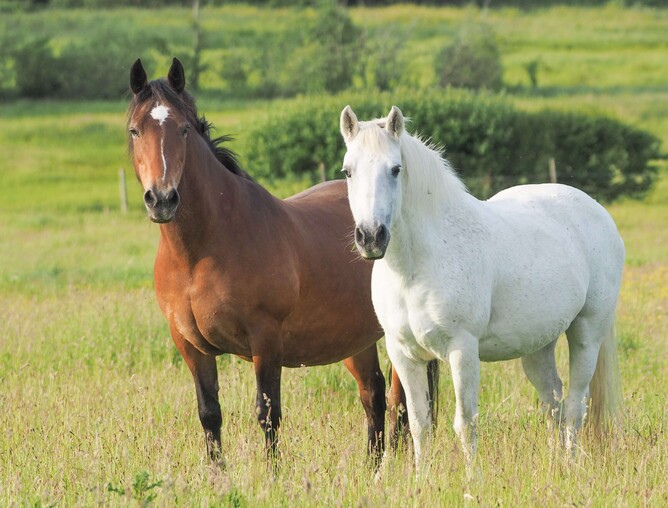Gastric ulcers have become more widely recognised in performance horses, as well as in racehorses, in the last 10 - 15 years.
Previously, horses with ulcers were expected to look run down, perhaps ‘tucked up’, skinny and/or with a poor coat. They could be grumpy/unhappy and also picky with their feed – sometimes even completely ‘off’ their hard feed and preferring to eat fibre.
Recent research shows, however, that many horses with ulcers may not display these signs and instead appear to be fine.
Fat, shiny warmbloods do not typically look like horses with ulcers, but some of them are riddled. Other horses that live relaxed lives and are not particularly active, or little ponies who seem to be having a great time, can also be suffering.
It is, therefore, important that we do not assume horses do not have gastric ulcers based purely on how they appear. Other indications of ulcers that we can look out for include changes in behaviour, such as:
Poor performance;
Not wanting to go forward in their work;
Resenting the rider putting their leg on;
Being girthy when being saddled;
Being generally grumpy, dull and irritable, and
No longer having a happy, relaxed attitude.
Ulcers can also present as repeat colic episodes. These may just be low-grade grumbles that either go away by themselves or need a shot of pain relief to aid recovery.
Gastroscopy
Many of the above signs occur because your horse is in pain, and assessment is required to determine if this is caused by ulcers or some other condition, such as saddle or girth fit, training issues, or other back or orthopaedic issues.
To determine whether a horse has gastric ulcers, a gastroscope is used to take a visual tour of the stomach. This is a long fibre-optic camera that goes in through a horse's nostril and down through its oesophagus - giving your vet a view of the whole stomach.
There are two different types of gastric ulcers in horses:
Squamous ulcers, and
Glandular ulcers.
Apart from being able to identify if your horse has ulcers, a gastroscopy enables us to differentiate between these two types, which require different treatment and management. With this information, we can then form an appropriate treatment plan with you to treat the ulcers and return your horse to its usual self.
For more information about the benefits of gastroscopy, check out this article: Gastric ulcers and the benefits of gastroscopy

